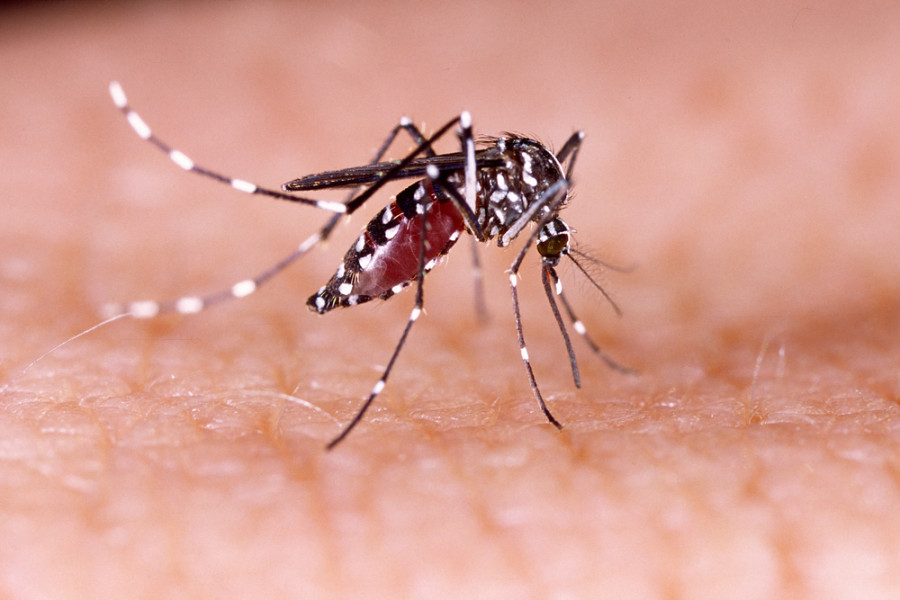Health
West Nile fever outbreak in India, Nepal on alert
One person dies in India’s Kerala. World Health Organisation cautions Nepal under International Health Regulations.
Post Report
As India reports an outbreak of West Nile virus, Nepal’s Ministry of Health and Population said it has been assessing the risk of the deadly disease in the country.
Nepal is facing a high risk of several vector-borne diseases, including the outbreak of West Nile fever, due to rising temperatures, looming monsoon, the presence of virus-spreading vectors in the country, and free movement of people between the two countries, officials said.
“We are aware of the outbreak of West Nile fever in India,” said Dr Hemanta Chandra Ojha, an official at the Epidemiology and Disease Control Division. “International Health Regulations also require us to increase our vigilance against the disease.”
West Nile virus is a mosquito-borne disease transmitted to humans and animals through the bite of an infected Culex mosquito. The same vector also spreads elephantiasis or filariasis and Japanese encephalitis.
Experts say mosquitoes become infected after feeding on infected birds, especially crows. When the infected mosquitoes bite humans and animals, they spread the virus, which can cause neurological problems and death in infected persons.
India has reported a death from the West Nile virus in Kerala and six other cases of infections in Thrissur, Malappuram and Kozhikode districts in recent days.
Ojha said that Nepal is a member state of the World Health Organisation and receives every alert issued under the International Health Regulations.
“Nepal is in the high-risk zone for an outbreak of the West Nile Virus due to its climate, presence of virus spreading vector, and mobility of people to and from the high-risk zones,” said Ojha.
At least two cases of West Nile Virus infection were reported in a study carried out in Nepal in 2009-2010. Of 2,046 serum samples tested to examine the virus, two samples contained fragments of the genome resembling virus lineage 1.
Experts say there is no specific treatment for West Nile virus. They suggest drinking plenty of water and fluids, resting, and taking medicine for fever in mild cases.
“Those experiencing severe headache, high fever, weakness and confusion should see the doctor at the earliest,” said Dr Sher Bahadur Pun, chief of the Clinical Research Unit at Sukraraj Tropical and Infectious Disease Hospital. “As mosquito breeding season has started, one should also take precautions to avoid mosquito bites.”
Nepal is one of the most vulnerable countries to the climate crisis, as multiple studies have pointed out.
The United Nations’s report “Climate Change 2022: Impacts, Adaptation and Vulnerability” states that at least six major vector-borne diseases affected by climate drivers have recently emerged in Nepal and are now considered endemic, with climate change implicated as the primary driver.
The report also reveals that the warming climate has caused the Anopheles, Culex, and Aedes mosquitos to move to altitudes above 2,000 metres in Nepal. This shift in their distribution has serious implications, as over 100 species of Anopheles transmit malaria, more than 950 species of Aedes spread diseases like dengue, chikungunya, Zika, yellow fever, and West Nile virus, and over 1,000 species of Culex transmit Japanese encephalitis, filariasis, and West Nile virus.
Vector-borne diseases, or VBDs, are spread by carriers like mosquitoes, sandflies, kissing bugs, and ticks. The report says that viruses like dengue, chikungunya, and Japanese encephalitis are emerging in Nepal's hilly and mountainous areas.
Experts say frequent movement of people is also a reason diseases are detected in new areas. When disease vectors bite an infected person, they transmit the disease, and the vectors’ entire generation gets infected.
The Ministry of Health has reported over 1,000 cases of dengue infection since January, this year.




 17.12°C Kathmandu
17.12°C Kathmandu












%20(1).jpg&w=300&height=200)
